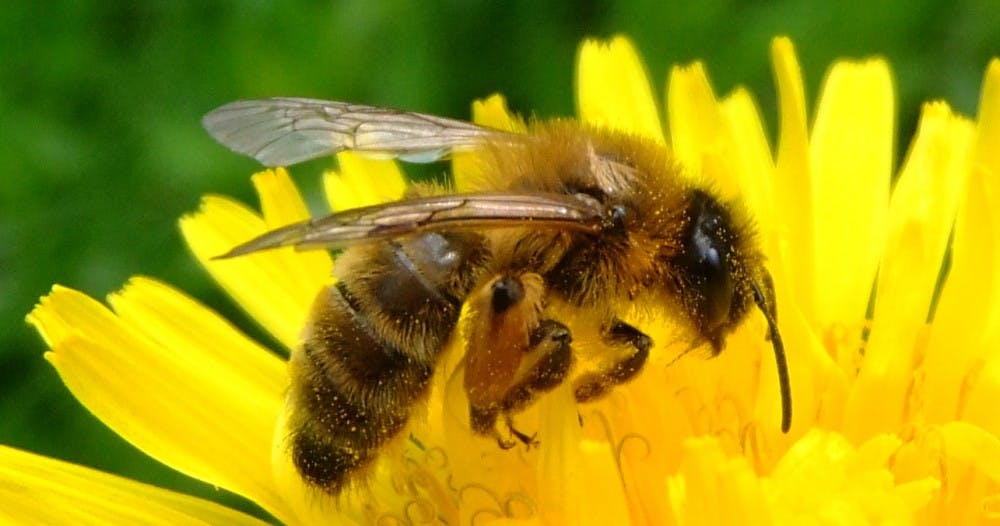The U.S. Department of the Interior has recently classified the rusty patched bumblebee, Bombus affinis, as an endangered species under the Endangered Species Act. Following an increase in disease and pesticide usage, sightings of the rusty patched bumblebee have significantly declined since the late 1990s.
According to the U.S. Fish and Wildlife Service website, the rusty patched bumblebee was once a common insect in 28 states. Based on current estimates, however, only 0.1 percent of the species still exists in its historical range of the Midwestern and Northeastern U.S.
Environmental Sciences research prof. T'ai Roulston identifies the disease Nosema bombi as a primary reason for the disappearance of the rusty patched bumblebee.
“There is a particular fungal disease that is very common among the bumblebee species that are declining. Of all the species that have been declining, [the rusty patched bumblebee] has been declining the farthest,” Roulston said. “It used to be very common all through the Midwest [and] through the East Coast of the U.S. ... It’s pretty much done all through the East Coast.”
Roulston said there are disease factors which tend to influence certain species more than others, usually because of differential susceptibility to disease. He said this is the case with the rusty patched bumblebee and N. bombi.
N. bombi is an obligate intracellular parasite that infects bumblebee species at a substantial rate, according to the Journal of Invertebrate Pathology. For example, the disease has been shown to reduce the longevity of worker bees.
Beyond disease, biology prof. Laura Galloway identified a combination of natural and manmade factors as major contributors to bee population declines.
“The natural factors would be diseases … Also pesticides that people spray — widely used in agriculture — also are aimed at insects. [They] have [had] inadvertent effects on the bee population,” Galloway said.
As pollinators, bees enable plants to produce seeds and generally regulate agricultural production. Continuous stresses that bees experience therefore reduce plant longevity and production.
The rusty patched bumblebee is the first continental bee species to be listed under the ESA. Regulations of the ESA are designed to prevent further species declines, which could result in extinction. Historically, the legislation has improved population sizes of a variety of species, such as the American Bald Eagle.
Human actions can also facilitate improvements in bee health.
“Planting — particularly in the fall — a fall-blooming plant or a very long summer-blooming plant, those are the most advantageous because [bees] can continue to go back to that plant every day for weeks,” Martha Kiene, vice president of the Virginia State Beekeepers Association, said. “Something like butterfly bushes is a great plant [promoting pollination].”
Kiene suggests avoiding pesticides altogether, or at least applying them only in the evening, when pollinators have returned to their nests or hives. If applied at night, the pesticide can be absorbed before pollinators arrive the next morning.
Listing the rusty patched bumblebee under the ESA may help facilitate population regrowth for this important pollinator.
“It has a good track record when species are listed under the ESA. Very often, the population size goes up, the number goes up and it is a really effective piece of legislation,” Galloway said.







